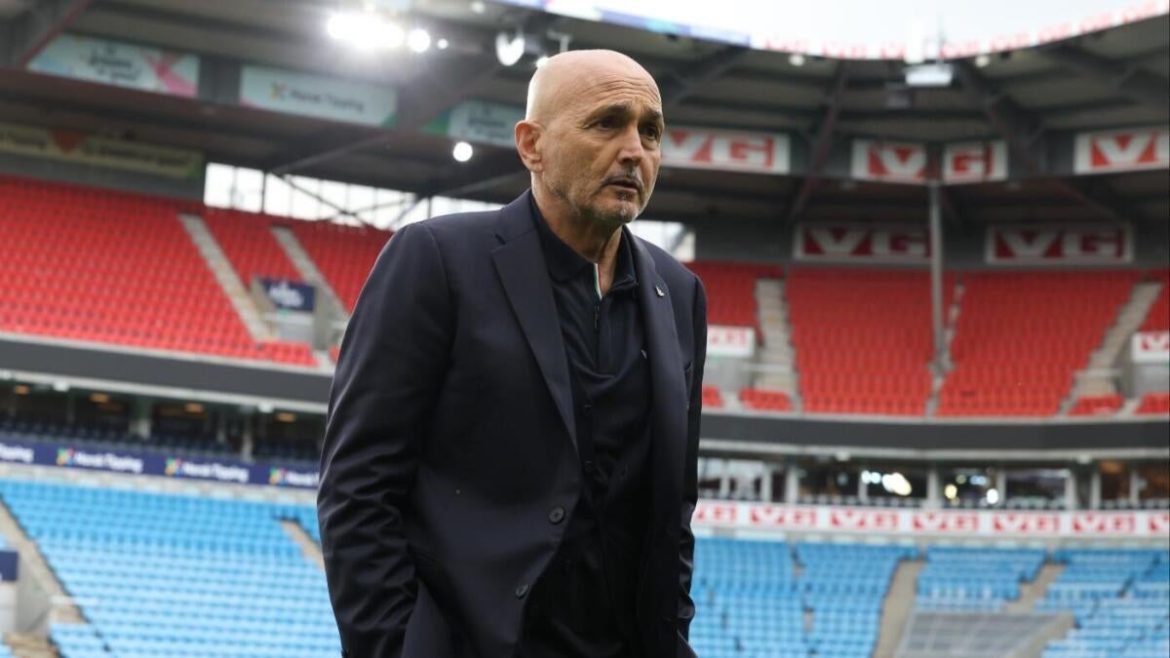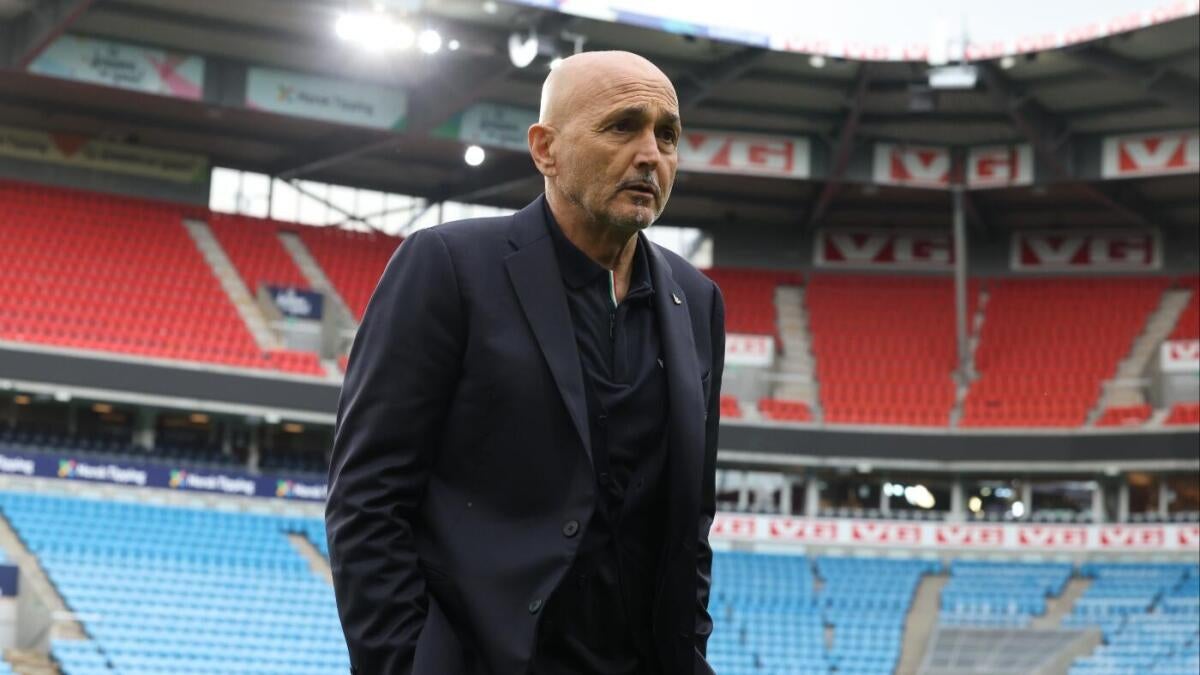Italy’s national football team is at a pivotal crossroads following the departure of head coach Luciano Spalletti. This transition comes amid a backdrop of mounting pressure related to Italy’s questionable qualification prospects for the upcoming World Cup. Analyzing the unfolding situation reveals the candidate profiles for the next head coach, the strategic and emotional stakes, and the potential direction of Italy’s football future.
The Context of Spalletti’s Exit
Luciano Spalletti, who led Italy through recent World Cup qualifiers, announced his departure shortly after a disappointing 3-0 loss to Norway in their opening qualifying match. Officially, Spalletti will step down after Italy’s final qualifier against Moldova, marking an end to his tenure amidst fears Italy may fail to secure a third straight World Cup berth. This marks a significant moment for a nation that has won the tournament four times and contemplates a stark deviation from its traditionally dominant status.
Spalletti’s departure stems from a combination of unsatisfactory results and the urgent desire within Italian football to rejuvenate the national team’s competitive edge. His coaching style — focusing on a 4-3-3 formation emphasizing dynamic wingers and young talent — has its supporters, but the recent results suggest the need for fresh leadership to reconnect with broader ambitions.
The Leading Candidates: Stefano Pioli and Claudio Ranieri
Two principal candidates have emerged to replace Spalletti’s role as Italy’s national coach:
Stefano Pioli:
Pioli currently commands attention as the winning coach behind AC Milan’s recent Scudetto triumph. His success at Milan, leading one of Italy’s most storied clubs back to top-tier glory, makes him a natural choice. Pioli is recognized for his tactical flexibility, man-management skills, and ability to blend experienced players with emerging talents. If appointed, Pioli’s national team may inherit a style that balances caution with inventive attacking play, potentially stabilizing Italy’s qualification campaign and injecting confidence.
Claudio Ranieri:
Ranieri is a deeply experienced option, respected for his long managerial career that spans clubs across Italy and Europe. Recently returning as an advisor at AS Roma, his calm leadership and strategic savvy are well-regarded by players and fans alike. Notably, Ranieri enjoys considerable public support, with Italy’s fan base expressing strong calls for his appointment. His reputation for resilience and adaptability could prove critical in navigating Italy through a turbulent qualification phase. Ranieri brings a measured temperament and a wealth of understanding regarding Italian football’s psyche, which might help to unify and steady the team.
Additional Figures and Speculations
While Pioli and Ranieri headline the shortlist, figures like Antonio Conte and Gennaro Gattuso still attract interest. Conte, a former Italy head coach, is associated with passion and intensity, but negotiations would be complex. Gattuso, a 2006 World Cup winner as a player, carries symbolic value but has had mixed results as a coach. The lingering speculation around these names underscores the complexity of Italy’s search to reconcile immediate qualification needs with a long-term vision.
The Tactical and Cultural Future of Italy
Spalletti’s Italy adopted a 4-3-3 system resembling his Napoli days and the approach developed by Roberto Mancini. This setup prioritizes a creative playmaker flanked by energetic wingers, supported by a sound central defense. However, there are nuances in how each potential incoming coach might evolve or overhaul this structure:
– Pioli might maintain the 4-3-3 framework but implement variations tailored to the strengths of the national roster, particularly emphasizing Milan’s emerging stars.
– Ranieri’s approach may lean on solid defense and tactical discipline without sacrificing attacking fluidity, drawing on his experience with teams needing steady rebuilds.
– Conte could reintroduce a more robust, intense pressing style, potentially reverting to a 3-5-2 or similar system that favors defensive solidity.
Moreover, there is shared acknowledgment across these options that nurturing young talent remains paramount. Spalletti was known for fostering younger players, a trait that seems necessary as Italy seeks revival amid generational transition.
The Emotional Undertone: Fans, Legacy, and National Pride
Italy’s national team isn’t merely a sporting institution; it embodies cultural identity and collective pride. The prospect of missing out on the World Cup provokes genuine fear and disappointment among supporters and analysts alike. Fans have vocally called for continuity in coaching figures who can stabilize the nation’s fortunes, with Ranieri often singled out as a figure embodying the needed calm and experience.
Spalletti’s abrupt departure is a reminder of the merciless nature of football management and the high stakes involved when national expectations meet the harsh realities of competition. The new coach must manage not only tactical and technical challenges but also the weight of historical legacy and public passion.
Conclusion: Navigating the Path Forward
Italy now stands at a crucial moment in its footballing journey — a moment marked by change, challenge, and opportunity. The leading candidates, Stefano Pioli and Claudio Ranieri, each bring distinct qualities that could shape Italy’s path to the World Cup and beyond. Pioli offers a fresh, confident approach rooted in recent club success, while Ranieri provides steady leadership backed by vast experience and popular support.
Ultimately, the next head coach must transcend the limitations of the present and forge a team capable of reclaiming Italy’s traditional status among the elite. This involves strategic wisdom, motivational skill, and an intuitive grasp of the evolving game. Whether through tactical innovation or cultural restoration, the new leadership will carry the hopes of a nation determined to remain a global football powerhouse.





